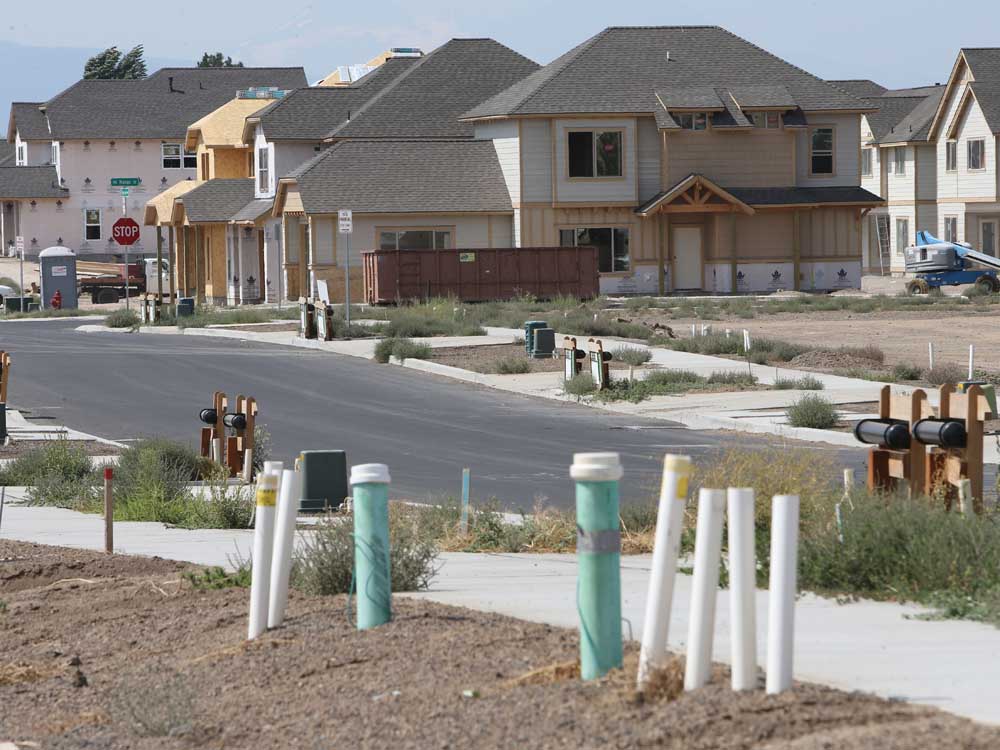Bend’s ‘ghost subdivisions’ start to fill up
Published 12:00 am Tuesday, August 30, 2016

- Andy Tullis / The BulletinConstruction halted during the recession has started up again in some Bend subdivisions In the Mirada subdivision near NE Butler Market and Eagle roads, roughly half of the more than 100 lots have been developed or are construction.
Three years ago, as Bend was still digging its way out of the recession, pockets of the city were like miniature ghost towns.
Then, a handful of early buyers were the only residents in neighborhoods made up almost entirely of empty lots, surrounded by the streets, sidewalks and utility lines installed to serve the neighbors that had not yet materialized.
At three neighborhoods The Bulletin examined in early 2013, much has changed.
In the Mirada subdivision, located off Butler Market Road in the city’s far northeast corner, roughly half of the more than 100 lots have been developed or are under construction.
The southern half of Mirada is still entirely undeveloped, but the Bend Park & Recreation District is pushing ahead with plans for a new, 4-acre park on a site now surrounded with unbuilt lots.
The park district’s board approved a construction contract for Eagle Park earlier this month, and construction could begin this fall.
On Bend’s north end, in the Westerly subdivision off OB Riley Road, all but a handful of lots have been built, and the neighborhood looks little different than any other.
Down south, in the Bailey neighborhood off Parrell Road, construction has been slower. As was the case in 2013, just two completed homes sit on the more than 50 platted lots. But construction is picking up, with nine houses under construction as of Monday.
In all three neighborhoods, new homes are listed for $300,000 and up.
Tim Knopp, executive vice president of the Central Oregon Builders Association, said subdivisions that didn’t get off the ground before the recession have been attractive to builders as the economy has improved.
Knopp said developers who snapped up partially built subdivisions when hardly any houses were being built in Bend have benefited handsomely.
The cost of building streets and installing utility lines to transform bare dirt into a builder-ready subdivision is up around 50 percent over four or five years ago, Knopp said, largely because construction companies are busy enough to demand higher prices for their services.
Knopp said Bend is on track to issue around 1,000 building permits for single-family homes this year, in line with the 10-year average. It’s been 10 years of wild swings, however, Knopp said — from around 2,200 permits a year in 2006 and 2007, to only about 150 in 2010.
“I think at the current absorption rate we may have two years left before everything is gone, and that doesn’t bode well for prices because you don’t have supply while you still have the demand.”
Brian Rankin, planning manager for the city of Bend, said there are probably somewhere around 2,900 unbuilt lots in Bend, along with a few hundred acres of vacant land that has not yet been subdivided into home sites.
Rankin has been leading the city’s effort to expand the urban growth boundary, which would add 2,300 acres to the city and room for more than 17,000 new homes.
If the state approves the city’s UGB plan — no decision is anticipated until sometime this winter — it would still take until mid-2017 or 2018 until any new buildable land could be brought into the city and readied for construction, Rankin said.
— Reporter: 541-383-0387, shammers@bendbulletin.com






